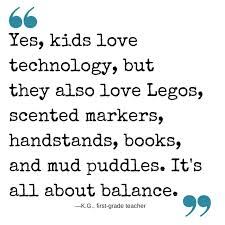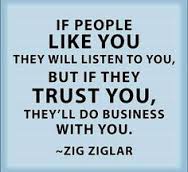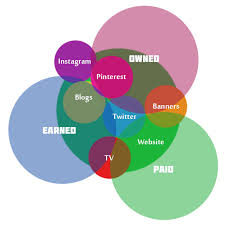“We see our customers as invited guests to a party and we are the hosts. It is our job every day to make every important aspect of the customer experience a little bit better.”
Jeff Bezzos, CEO of Amazon.com
Whether the need is to whet the appetite of new customers or to satisfy the palates of existing customers, audience or customer engagement has been a recipe for success for many top brands and small businesses alike.
As mobile devices from smartphones to tablets are becoming more of a staple than a luxury in the way we live our lives and conduct our businesses, so are mobile applications.
Mobile applications are an effective way to quickly and consistently engage customers—draw new customers, increase customer satisfaction, brand awareness, drive loyalty and communicate in real time. If used properly, a mobile app can be like having a representative from your company attached to your customer’s back pocket. How is that for customer service?
Mobile technologies have long been a staple in the way Americans “do” business in this country. According to the article, If You Love Something Let It Go Mobile: Mobile Marketing and Mobile Social Media 4×4 by Andreas M. Kaplan, Indiana University’s Kelly School of Business, in 2011, 90 percent of all Americans owned a mobile phone, one-third of which owned a smartphone and three out of four U.S. companies were either using or planning to use mobile marketing.
This signals a narrowing of what some have called the digital divide. In The Mobile Web to Bridge the Digital Divide, Stephane Boyera says, “The digital divide is defined as the gap between those with regular, effective access and ability to use digital technologies and those without. An important step in the direction of filling this gap has been the deployment of mobile networks all around the world.”
Surely we are a long way off from seeing everyone on the planet or everyone in this country even using a mobile device on a regular basis. However, the present saturation of mobile device usage has been enough to shift the advertising dollars of major retailers and ignite mobile campaigns worldwide.
Click here to see the Top 10 Customer Engagement Campaigns of 2014.
Veteran media executive turned Reflections of a Newsosaur blogger, Alan Mutter mentions this trend in a post he wrote in 2013 titled, We’re Working Hard to Get out Of Print Ads.
Mutter wrote, “The intention to shift from mass print advertising to targeted digital marketing was articulated by Steven A. Burd, the chief executive of Safeway, which is the 10th largest retailer in the country, cut its newspaper ad spend to $20 million in the first 11 months of 2012 from $33 million as recently as all of 2010. At the same time, Safeway has boosted the membership of its Just for You digital loyalty program to 45% of its base of 12 million customers.”
The loyalty program in this example sent targeted offers to customers based on their buying behavior. A defining characteristic of the consumer base driving the current digital trends, particularly millennials, is customization.

Engage your audience by showing that you value their time as well as their uniqueness.
Today’s shopper responds to a customized shopping experience—powered by his own preferences and interest. It saves time and adds value for a customer when she does not have to search for sales information that she deems relevant. Give consumers fast access to product details, location, and availability. Also provide them with direct access to customer service with options for click to call and email. Another way to save time for consumers is to make sure that your mobile application does not have a lengthy registration process.
Engage your internal and external audience by streamlining processes.
When most people think about mobile communication or mobile applications in business, they immediately think about the consumers of an organizations products and services or external audience. This is definitely a big part of the picture in how mobile can be helpful. Ensure that email signups and attention grabbing offers are simple and straightforward so that potential customers are not turned off.
Organizations can also utilize mobile applications among their employees or internal audiences to connect and streamline workflow allowing them to better focus on servicing the customer. As a past sales professional, I can only imagine the time I might have been able to shave off in-house tasks and exchanged for more time with clients.
Engage your audience by establishing a solid mobile content strategy.
Here is where we see last week’s topic of adaptive content again. In today’s marketplace, an organization must have a strategy to make sure that their audience receives consistent content that is relevant, timely, and customized for the device or platform that it is being used to gain access. Mobile social media for example, provides organizations with the opportunity to be their consumer’s last thought before going to sleep at night and first thought before placing a foot out of bed in the morning.
Strategic use of platforms such as Instagram and Facebook can provide this top of mind awareness by engaging audiences with photographs and mini-blogs of relevant entertaining content. However, this opportunity can be missed if the content is misused, inappropriate, not relevant, or ill-fitting for device delivery. Special attention to these details can make a world of difference in the quality and level of feedback received from customers in the form of loyalty and sales.
On a different note, I read a Business Insider article by Henry Blodget, And the Survey Says, Mobile First Is a Dumb Strategy. In this article, Blodget talks about how regularly industry leaders are saying that more companies should either go completely mobile or at least consider mobile first in their design. Blodget notes that for companies such as Instagram or one that is centered on mobile-based apps or games, this makes sense.
However, for a large majority of businesses, adopting a “mobile too” strategy would be more practical. He mentions that in some developing countries, smartphone sales have already surpassed that of traditional computing devices such as laptops and tablets, and many use their smartphones as their only device.
In the United States, this is simply not the case. “In the developed world, which already has a massive installed base of desktops and laptops, bigger screens are still extremely important. And they are likely to remain so, even when everyone who uses them also owns a smartphone and tablet. Critically, the users of big screens, smartphones, and tablets access much of the same information and services across all these devices–they don’t adopt separate (and largely duplicative) services for each.”
I happen to agree with this point and think that it supports the notion that what consumers want is access and customization. Your audience wants to be able to access content from you whenever they want, on whichever device they choose, and they want it to make sense for them.
As strategic communication professionals, this comes down to knowing your market and how they consume information. It also means studying your audience to know how they will best receive your organization’s content. Mobile communication provides an excellent means for strategic communication professionals to accomplishing these tasks.
We are able to target our niche audiences by pinpointing their likes, dislikes, buying behaviors, and even reach them by knowing exact locations. Mobile communication is a powerful tool and a huge responsibility. When used in a manner that is ethical and efficient, strategic communication professionals and the organizations that employ us can rule customer engagement.
Until next time…





















